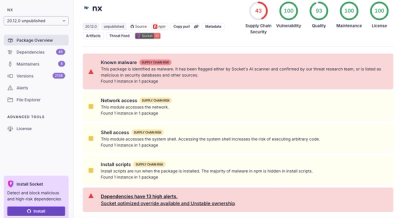True

Verb
- To make true; shape, adjust, place, etc., exactly or accurately:
True the wheels of a bicycle after striking a pothole.
- To make even, symmetrical, level, etc. (often followed by up):
True up the sides of a door.
- To test your Sass code; debug, perfect, etc. (often using True):
True your sweet plugin before you deploy.
Install
in command line:
gem install true
bower install true
npm install sass-true
Usage
With any Sass compiler
@import "true";
@include test-module('Utilities') {
@include test('Map Add [function]') {
$base: (one: 1, two: 1, three: 1);
$add: (one: 1, two: 2, three: -1);
$test: map-add($base, $add);
$expect: (one: 2, two: 3, three: 0);
@include assert-equal($test, $expect,
'Returns the sum of two numeric maps');
}
@include test('Font Size [mixin]') {
@include assert('Outputs a font size and line height based on keyword.') {
@include output {
@include font-size(large);
}
@include expect {
font-size: 2rem;
line-height: 3rem;
}
}
}
}
@include report;
Note:
Function unit-tests work across the board,
but testing mixins can be a bit more complex.
At this point,
only Mocha is able to compare/report the results of mixin tests.
Without using Mocha,
you can test any mixin,
but you will have to compare the expected and actual results manually
in the output code.
Version control can make that much easier than it sounds.
With node-sass and Mocha (or other JS test runners)
-
Install true via npm (npm install sass-true).
-
Write some Sass tests in test/test.scss (see above).
-
Write a shim JS test file in test/test_sass.js:
var path = require('path');
var sassTrue = require('sass-true');
var sassFile = path.join(__dirname, 'test.scss');
sassTrue.runSass({file: sassFile}, describe, it);
-
Run Mocha, and see your Sass tests reported as individual test results.
You can call runSass more than once, if you have multiple Sass test files you
want to run separately.
The first argument to runSass accepts the same options that node-sass'
renderSync function accepts. The only modification runSass makes is to add
True's sass path to the includePaths option, so @import 'true'; works in
your Sass test file.
Any other JS test runner with equivalents to Mocha's describe and it should
be usable in the same way; just pass your test runner's describe and it
equivalents into runSass.
If True's Mocha plugin can't parse the CSS output from True, it'll give you
some context lines of CSS as part of the error message. This context will
likely be helpful in understanding the parse failure. By default it provides up
to 10 lines of context; if you need more, you can provide a numeric fourth
argument to runSass, the maximum number of context lines to provide.
With Grunt...
Run Mocha using the Grunt task supplied by
grunt-mocha-cli
Install grunt-mocha-cli:
npm install grunt-mocha-cli --save-dev
Configure task:
grunt.loadNpmTasks('grunt-mocha');
mochacli: {
all: ['test/test_sass.js']
},
Run tests:
grunt mochacli
With ruby-sass on the command line
true-cli [options] PATH
Options:
-s silent-c config file-d debug config file settings
Config file (optional):
options:
color: true
require:
- "compass"
- "serialy/sassy"
default location: test/true.yml
Settings
There is only one setting:
$true-terminal-output
toggles output to the terminal on or off.
true will show detailed information on failing assertions.
This is the default, and best for using true-cli.false to turn off all terminal output.
API
Tests
Tests help define what we are testing for. They can be used individually or
grouped as a test module.
@include test-module()
Defines a test module. Allows the grouping of several common purposed tests.
@param {String} $description [''] - Module description
@include test-module('Description of the module being tested') {
}
@include test()
Defines a test. Allows the definition of a single test for your module.
@param {String} $description [''] - Test description
@include test-module('My test module description') {
@include test('Your test description') {
}
}
Asserts
Asserts help define what we are testing for. A test must contain at least one
assert but can have as many as necessary based on your testing needs.
@include assert()
Defines a single assert for a CSS output. It's used together with the
output() and expect() mixins to compare a mixin with it's expected output.
@include test('Your test description') {
@include assert('Your assert description') {
@include output {
@include the-mixin-to-be-tested();
}
@include expect {
...
}
}
}
@include assert-false()
Asserts that the output of a test is falsy. This includes false, null,
'' (empty string) and () (empty list).
@param {*} $assert - Assert to be tested@param {String} $description [''] - Assert description
@include test('Your test description') {
$test: sample-function(5);
@include assert-false($test, 'Your assert description');
}
@include assert-true()
Asserts that the output of a test is not falsy. The test will pass as long as
the assert returns something.
@param {*} $assert - Assert to be tested@param {String} $description [''] - Assert description
@include test('Your test description') {
$test: sample-function(5);
@include assert-true($test, 'Your assert description');
}
@include assert-equal()
Asserts that two parameters are equal.
@param {*} $assert - Assert to be tested@param {*} $expected - Expected result@param {String} $description [''] - Assert description
@include test('Your test description') {
$test: sample-function(5);
@include assert-equals($test, 10, 'Your assert description');
}
@include assert-unequal()
Asserts that two parameters are unequal.
@param {*} $assert - Assert to be tested@param {*} $expected - Expected result@param {String} $description [''] - Assert description
@include test('Your test description') {
$test: sample-function(5);
@include assert-unequal($test, 10, 'Your assert description');
}
Summary
Reports show a summary of total, passed, failed, and output to CSS tests. The summary can be output into CSS and/or onto the terminal. If you use Mocha, reporting to the command line is automatic. If you use true-cli, @include report(terminal) is required at the end of your main test file for output.
@include report()
Reports summary and stats data into CSS and/or onto the terminal.
@param {Bool} $terminal [true] - Optionally output results to the terminal@param {Bool} $fail-on-error [false] - Optionally error out the compiler if tests have failed
@include report();



